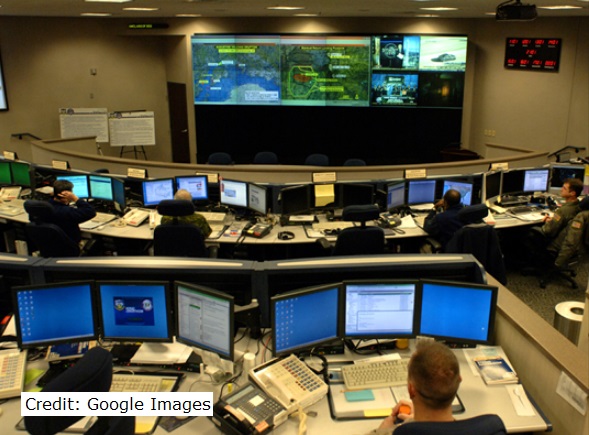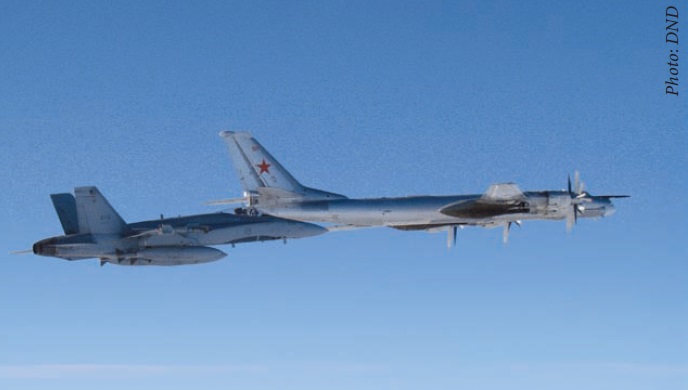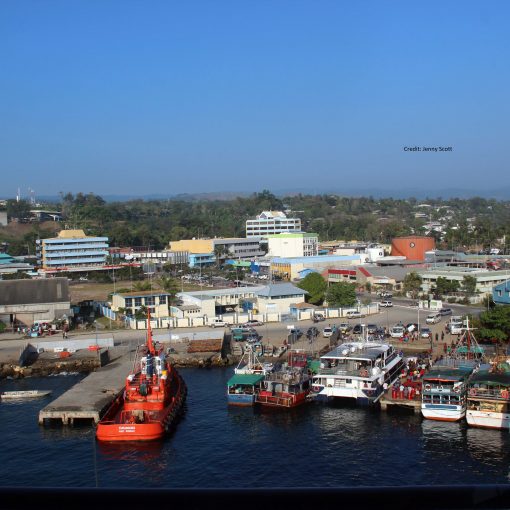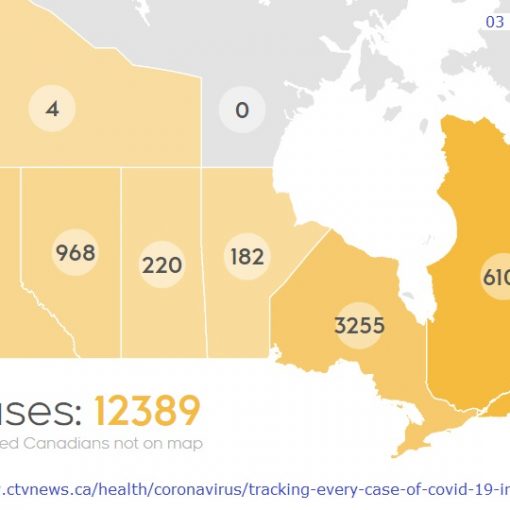Andrea Charron, 01 June 2020.
When the NORAD Agreement was signed in perpetuity in 2006, the command gained a third mission: maritime warning.
NORAD’s maritime warning mission:
- consists of processing, assessing, and disseminating intelligence and information related to the respective maritime areas and internal waterways of, and the maritime approaches to, the United States and Canada, and warning of maritime threats to, or attacks against North America utilizing mutual support arrangements with other commands and agencies, to enable identification, validation, and response by national commands and agencies responsible for maritime defense and security.
- Through these tasks NORAD shall develop a comprehensive shared understanding of maritime activities to better identify potential maritime threats to North American security. Maritime surveillance and control shall continue to be exercised by national commands and, as appropriate, coordinated bilaterally.[1]
NORAD’s maritime warning mission has three parts:
- Process, assess and disseminate intelligence and operational information related to the respective maritime areas and approaches to Canada and the United States.
- Develop a comprehensive shared understanding of maritime activities to better identify potential maritime threats to North American security.
- Warn of maritime threats to, or attacks against North America.
NORAD’s maritime area of operations is global and the goal is to facilitate a response that could be unilateral or bi-national depending on the threat. NORAD does not have a control mission, only maritime warning function. Maritime surveillance and control are not part of the NORAD maritime mission and continue to be executed by national commands and, as appropriate, coordinated bilaterally between the two countries.
The origins of NORAD’s maritime warning mission can be traced to the fallout of the 9/11 attacks. Prior to then, there was no indication that NORAD would evolve beyond its aerospace mission. However, internal NORAD concerns about its future had been longstanding following the end of the Cold War, and the disappearance of its functional raison d’être - the Soviet long-range bomber/cruise missile threat. 9/11 reconfirmed NORAD’s important mandate but also highlighted gaps and weaknesses. NORAD quickly adapted by adding an internal North American air picture to the existing external one by connecting NORAD to the internal air picture from the American Federal Aviation Administration (FAA) and NAVCANADA, and developing agreed protocols for the interception of internal air threats.[2] Even so, preparedness concerns did not disappear. They were most pronounced over the issue of Canadian / NORAD participation in the evolving US ballistic missile defence program. Yet, one can also surmise that these concerns were also present in other areas of the new post-9/11 threat environment as a means to ensure NORAD’s future relevance. In this regard, the maritime sector arguably appeared as the most promising of the new areas in which to expand not least of all because the lack of maritime domain awareness was a growing concern, and NORAD had considerable (albeit aerospace) warning experience.

Maritime domain awareness, surveillance and command of the global ocean commons are increasingly important and contested. From tracing criminal activity, to tracking infected crews to catching sanctions-busting activity by actors around the world, NORAD’s maritime warning mission is a vital one but not exploited to its full potential and grossly undervalued. If you want to know more about this topic, you should read the following report. This report outlines the origins of NORAD’s maritime warning mission in addition to the bilateral responses when NORAD issues warning and advisories. It is an important read.[3]
References
- Agreement between the Government of the United States of America and the Government of Canada on the North American Aerospace Defense Command (28 April 2006) (Otherwise referred to as the “2006 NORAD Agreement”): para 2c. See http://www.state.gov/documents/organization/69727.pdf The 2006 Agreement replaced the reference to “monitoring” with “processing, assessing, and disseminating intelligence” for aerospace and added it for the new maritime warning mission reinforcing the fact that the respective national authorities monitor for threats, not NORAD; control remains firmly within the purview of the respective national governments. See Ernie Regehr for the implications for Canada concerning the 2006 Agreement. The Ploughshares Monitor, Autumn 2006, Volume 27, Issue 3, See http://ploughshares.ca/pl_publications/norad-renewal-further-down-the-slippery-slope/
- While this was readily integrated into NORAD, each nation adopted a different protocol for the interception of hijacked aircraft. In the United States, authority was delegated to the commander of NORTHCOM/NORAD. In Canada, authority was invested with the Prime Minister.
- NORAD Maritime Warning Mission Final Report 8 Oct 2015 https://umanitoba.ca/centres/cdss/media/0_NORAD_Maritime_Warning_Mission_Final_Report_8_Oct_2015.pdf





One thought on “NORAD’s Maritime Warning Mission: The Most Overlooked, yet critically important mission for the foreseeable future”
Overlooked? Yes, yes indeed.